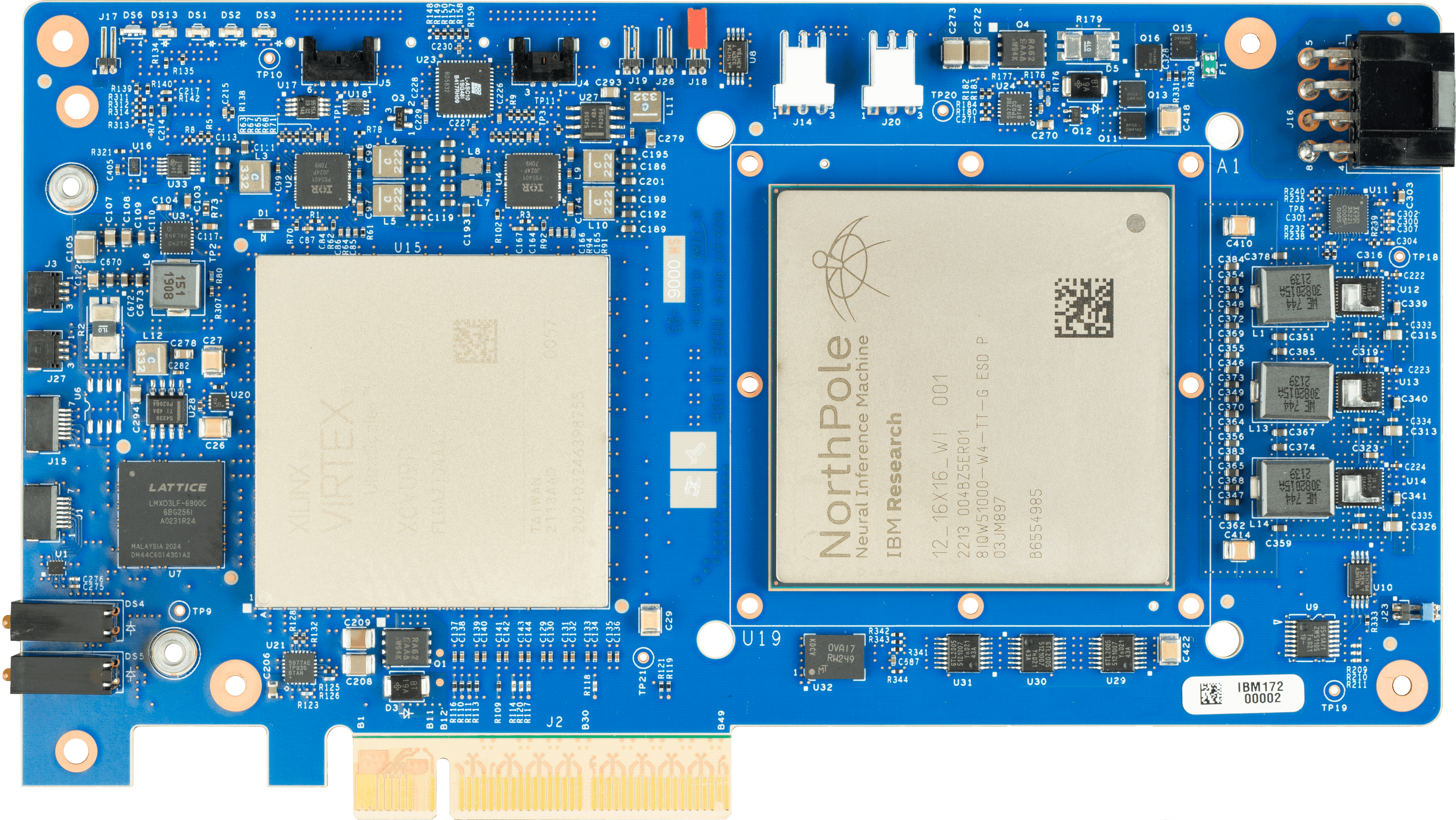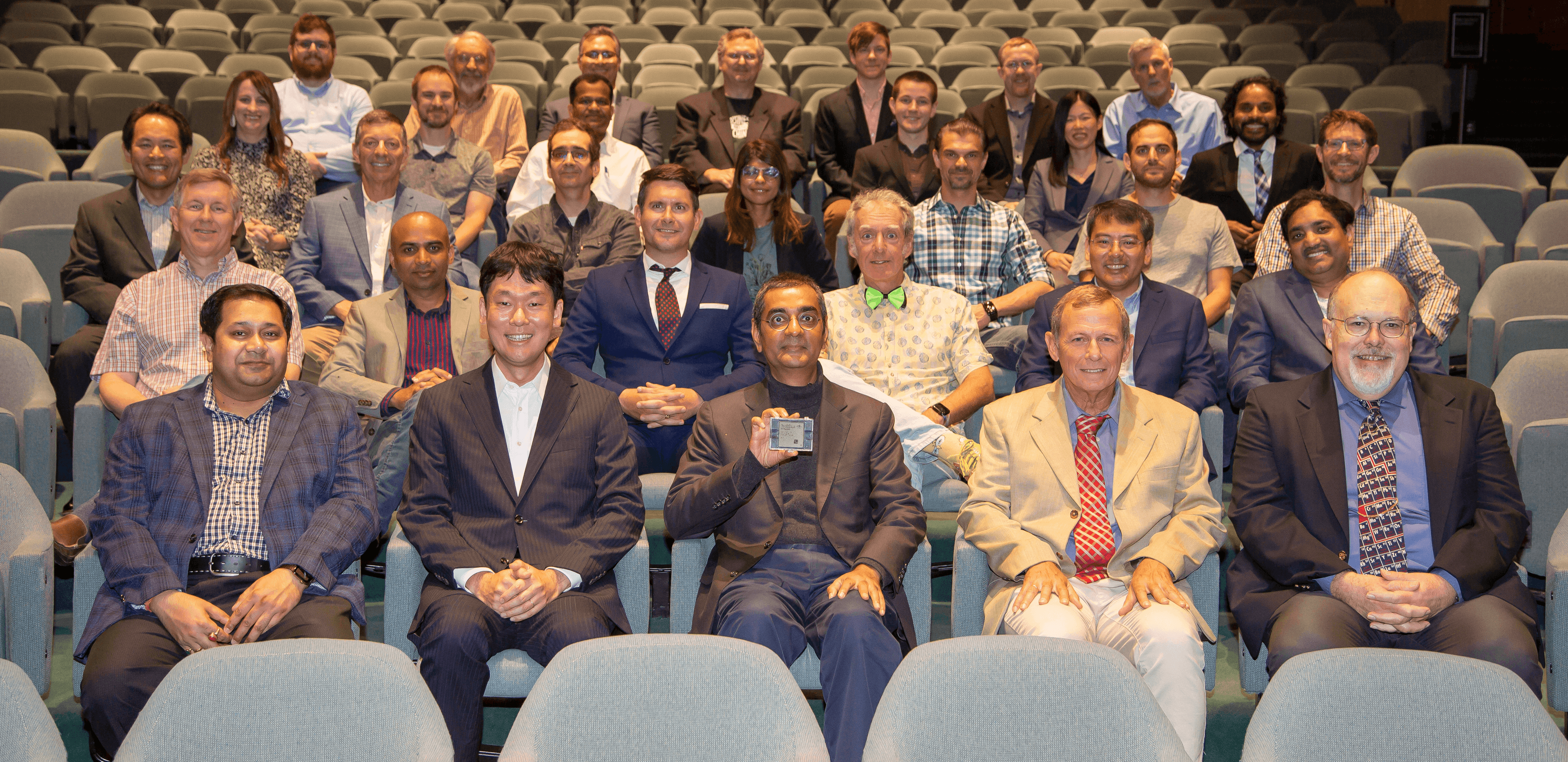A new chip prototype from IBM Research’s lab in California, long in the making, has the potential to upend how and where AI is used efficiently.
We’re in the midst of a Cambrian explosion in AI. Over the last decade, AI has gone from theory and small tests to enterprise-scale use cases. But the hardware used to run AI systems, although increasingly powerful, was not designed with today’s AI in mind. As AI systems scale, the costs skyrocket. And Moore’s Law, the theory that the density of circuits in processors would double each year, has slowed.
But new research out of IBM Research’s lab in Almaden, California, nearly two decades in the making, has the potential to drastically shift how we can efficiently scale up powerful AI hardware systems.
Since the birth of the semiconductor industry, computer chips have primarily followed the same basic structure, where the processing units and the memory storing the information to be processed are stored discretely. While this structure has allowed for simpler designs that have been able to scale well over the decades, it’s created what’s called the von Neumann bottleneck, where it takes time and energy to continually shuffle data back and forth between memory, processing, and any other devices within a chip. The work by IBM Research’s Dharmendra Modha and his colleagues aims to change this, taking inspiration from how the brain computes. “It forges a completely different path from the von Neumann architecture,” according to Modha.
Over the last eight years, Modha has been working on a new type of digital AI chip for neural inference, which he calls NorthPole. It’s an extension of TrueNorth, the last brain-inspired chip that Modha worked on prior to 2014. In tests on the popular ResNet-50 image recognition and YOLOv4 object detection models, the new prototype device has demonstrated higher energy efficiency, higher space efficiency, and lower latency than any other chip currently on the market, and is roughly 4,000 times faster than TrueNorth.
The first promising set of results from NorthPole chips were published today in Science. NorthPole is a breakthrough in chip architecture that delivers massive improvements in energy, space, and time efficiencies, according to Modha. Using the ResNet-50 model as a benchmark, NorthPole is considerably more efficient than common 12-nm GPUs and 14-nm CPUs. (NorthPole itself is built on 12 nm node processing technology.) In both cases, NorthPole is 25 times more energy efficient, when it comes to the number of frames interpreted per joule of power required. NorthPole also outperformed in latency, as well as space required to compute, in terms of frames interpreted per second per billion transistors required. According to Modha, on ResNet-50, NorthPole outperforms all major prevalent architectures — even those that use more advanced technology processes, such as a GPU implemented using a 4 nm process.
How does it manage to compute with so much efficiency than existing chips? One of the biggest differences with NorthPole is that all of the memory for the device is on the chip itself, rather than connected separately. Without that von Neumann bottleneck, the chip can carry out AI inferencing considerably faster than other chips already on the market. NorthPole was fabricated with a 12-nm node process, and contains 22 billion transistors in 800 square millimeters. It has 256 cores and can perform 2,048 operations per core per cycle at 8-bit precision, with potential to double and quadruple the number of operations with 4-bit and 2-bit precision, respectively. “It’s an entire network on a chip,” Modha said.
 The NorthPole chip on a PCIe card.
The NorthPole chip on a PCIe card.
“Architecturally, NorthPole blurs the boundary between compute and memory,” Modha said. “At the level of individual cores, NorthPole appears as memory-near-compute and from outside the chip, at the level of input-output, it appears as an active memory.” This makes NorthPole easy to integrate in systems and significantly reduces load on the host machine.
But the biggest advantage of NorthPole is also a constraint: it can only easily pull from the memory it has onboard. All of the speedups that are possible on the chip would be undercut if it had to access information from another place. Via an approach called scale-out, NorthPole can actually support larger neural networks by breaking them down into smaller sub-networks that fit within NorthPole’s model memory, and connecting these sub-networks together on multiple NorthPole chips. So while there is ample memory on a NorthPole (or collectively on a set of NorthPoles) for many of the models that would be useful for specific applications, this chip is not meant to be a jack of all trades. “We can’t run GPT-4 on this, but we could serve many of the models enterprises need,” Modha said . “And, of course, NorthPole is only for inferencing.”
This efficacy means that the device also doesn’t need bulky liquid-cooling systems to run — fans and heat sinks are more than enough — meaning that it could be deployed in some rather small spaces.
While research into the NorthPole chip is still ongoing, its structure lends itself to emerging AI use cases, as well as more well-established ones.
In testing, NorthPole team focused primarily on computer vision-related uses, in part because funding for the project came from the U.S. Department of Defense. Some of the primary applications in consideration were detection, image segmentation, and video classification. But it was also tested in other arenas, such as natural language processing (on the encoder-only BERT model) and speech recognition (on the DeepSpeech2 model). The team is currently exploring mapping decoder-only large language models to NorthPole scale-out systems.
When you think of these AI tasks, all sorts of fantastical use cases spring to mind, from autonomous vehicles, to robotics, digital assistants, or spatial computing. Many sorts of edge applications that require massive amounts of data processing in real time could be well-suited for NorthPole. For example, it could potentially be the sort of device that’s needed to move autonomous vehicles from machines that require set maps and routes to operate on a small scale, to ones that can think and react to the rare edge-case situations that make navigating in the real world so challenging even for proficient human drivers. These sorts of edge-cases are the exact sweet spot for future NorthPole applications. NorthPole could enable satellites that monitor agriculture and manage wildlife populations, monitor vehicle and freight for safer and less congested roads, operate robots safely, and detect cyber threats for safer businesses.
This is just the start of the work for Modha on NorthPole. The current state of the art for CPUs is 3 nm — and IBM itself is already years into research on 2 nm nodes. That means there’s a handful of generations of chip processing technologies NorthPole could be implemented on, in addition to fundamental architectural innovations, to keep finding efficiency and performance gains.
 Modha, center, with most of the team working on NorthPole.
Modha, center, with most of the team working on NorthPole.
But for Modha, this is just one important milestone along a continuum that has dominated the last 19 years of his professional career. He’s been working on digital brain-inspired chips throughout that time, knowing that the brain is the most energy-efficient processor we know, and searching for ways to replicate that digitally. TrueNorth was fully inspired by the structures of neurons in the brain — and had as many digital “synapses” in it as the brain of a bee. But sitting on a park bench in 2015 in San Francisco, Modha said he was thinking through his work to date. He had the belief that there was something in marrying the best of traditional processing devices with the structure of processing in the brain, where memory and processing are interspersed throughout the brain. The answer was “brain-inspired computing, with silicon speed,” according to Modha.
Over the next eight years, Modha and his colleagues were single-minded and hermetic in their goal of turning this vision into a reality. Toiling inconspicuously in Almaden, the team didn’t give any lectures or publish any papers on their work, until this year. Each person brought different skills and perspective yet everyone collaborated so that as a whole the team’s contribution was much greater than the sum of the parts. Now, the plan is to show what NorthPole could do, while exploring how to translate the designs into smaller chip production processes and further exploring the architectural possibilities.
This work stemmed from simple ideas — how can we make computers that work like the brain — and after years of fundamental research, has come up with an answer. Something that is really only possible today at a place like IBM Research, where there is the time and space to explore the big questions in computing, and where they can take us. “NorthPole is a faint representation of the brain in the mirror of a silicon wafer,” Modha said.
https://research.ibm.com/blog/northpole-ibm-ai-chip





